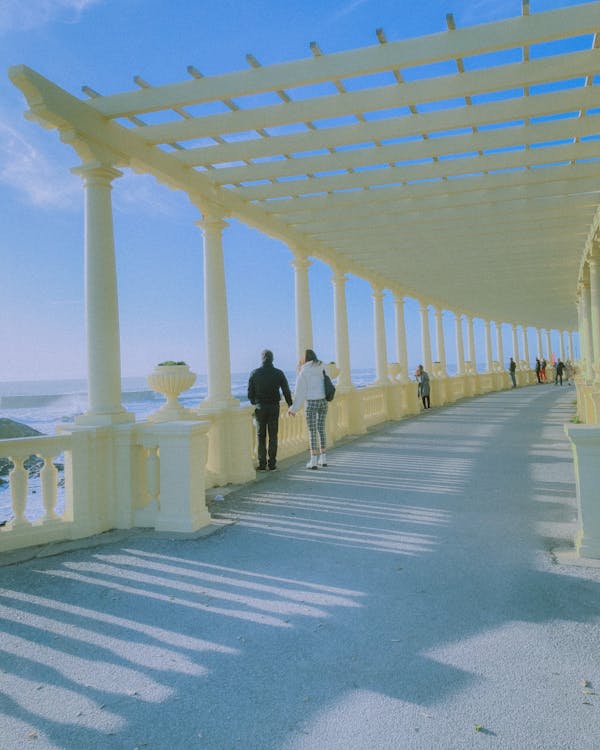
A pergola transcends its basic structure to become a significant lifestyle enhancement, blending aesthetic appeal with practical functionality. This versatile outdoor feature can be extensively customized to cater to a variety of preferences and requirements, enabling homeowners to extend their indoor living environments seamlessly into their outdoor spaces. As personal outdoor areas become increasingly pivotal in home design, the ability to customize pergola construction is essential for optimizing both its utility and enjoyment. This guide delves into how you can adapt pergola construction services to maximize comfort, style, and practicality. From selecting durable materials and incorporating innovative technologies to designing for privacy and integrating green elements, each customization aspect is geared towards creating a personalized and functional outdoor retreat. Whether it’s for relaxation, entertainment, or a private oasis, customizing your pergola allows you to craft a space that truly reflects your lifestyle and enhances your home’s overall appeal.
Understanding the Basics of Pergola Design
Before exploring customization options, it’s crucial to grasp the fundamental components of a pergola. Essentially, a pergola is an open-air structure characterized by columns that support a roofing grid consisting of beams and rafters. This architectural framework allows for a high degree of adaptability in both design and function, making pergolas versatile additions to any landscape. They can be designed to blend seamlessly with a home’s architecture, serving as an extension of the living area, or they can stand alone in a garden as a distinct feature. Understanding this basic structure is key to effectively tailoring a pergola to specific needs and aesthetic preferences. Whether attached to a dwelling or situated independently amongst flora, the pergola’s design can be modified to serve various purposes—from a cozy reading nook to a robust entertainment area. This versatility makes the pergola not only a functional space enhancer but also a significant decorative element in outdoor design. By starting with a clear understanding of these essential elements, homeowners and designers can better navigate the myriad of customization options available, ensuring that the pergola not only meets functional needs but also complements the surrounding environment.
1. Selecting the Right Materials
The choice of materials is crucial in the customization of your pergola. Each material offers different benefits in terms of durability, maintenance, and aesthetics:
Wood: Traditional and versatile, wood offers a natural look that can be painted or stained to match any style. Popular choices include cedar, teak, and pressure-treated pine.
Metal: Aluminum and steel pergolas are durable and offer a modern look. They are ideal for areas with harsh weather conditions, as they can withstand heavy winds and rain.
Vinyl: Vinyl pergolas are maintenance-free and resist rot, fading, and cracking. They are a good choice for those who want a clean, white appearance without the need for regular upkeep.
Composite: Made from a blend of wood fibers and plastic, composite materials provide the look of wood with the durability of plastic. This is an eco-friendly option that requires minimal maintenance.
2. Integrating Technology for Enhanced Comfort
To maximize functionality, integrating technology into your pergola design is key. Modern pergolas can include a variety of technological enhancements:
Automated Louvered Roofs: These allow you to control the amount of sunlight and shade, adapting quickly to weather changes.
LED Lighting: Integrated lighting extends the usability of your pergola into the evening, providing ambiance and security.
Heating Systems: Radiant heaters or built-in fireplaces can extend the usability of your outdoor space into the cooler months.
Sound Systems: Integrated speakers can create the perfect environment for entertainment or relaxation.
3. Optimizing Layout for Functionality
The layout of your pergola should be tailored to how you intend to use the space. Consider the following functionalities:
Dining and Cooking Areas: Incorporate an outdoor kitchen or barbecue area under the pergola for entertaining and meals.
Lounging Areas: Design areas for seating that include comfortable furniture, side tables, and access to shade or sun as preferred.
Workout Zones: For those interested in fitness, a designated area with outdoor-friendly workout equipment can be included.
Spa Features: Integrating a hot tub or small pool under the pergola creates a luxurious retreat.
4. Enhancing Privacy and Protection
While pergolas are inherently open structures, there are numerous ways to increase privacy and protection from the elements:
Curtains and Blinds: Add curtains or pull-down blinds for privacy and protection against sun and wind.
Lattice Panels: These can be used on the sides of the pergola to block wind and provide a surface for climbing plants.
Screens: Motorized or manual screens can shield against insects and provide additional privacy.
5. Incorporating Green Elements
Enhancing your pergola with green elements can boost its aesthetic appeal and create a healthier environment:
Climbing Plants: Ivy, grapes, or wisteria can be trained to climb the pergola, providing natural shade and beauty.
Vertical Gardens: Install vertical planters on the pergola’s posts or walls to grow herbs, flowers, or decorative plants.
Water Features: Adding a small fountain or water feature brings a sense of tranquility and helps cool the surrounding area.
6. Personalizing with Decor and Accessories
The final touches involve personalizing your pergola with decor and accessories that reflect your style:
Outdoor Rugs: These can define different areas under the pergola and add color and comfort underfoot.
Decorative Lighting: String lights or pendant lights can add a whimsical touch to evening gatherings.
Art and Decorations: Weather-resistant art or sculptures can personalize the space further.
Conclusion
Customizing your pergola for maximum functionality involves thoughtful consideration of materials, technology integration, layout optimization, and personal touches. By focusing on these aspects, you can transform a simple pergola into a multifunctional outdoor sanctuary that extends your living space and enhances your lifestyle. As you plan your pergola project, keep these tips in mind to ensure that every element of your outdoor structure is tailored to meet your needs, providing a perfect blend of functionality and style for years to come.

